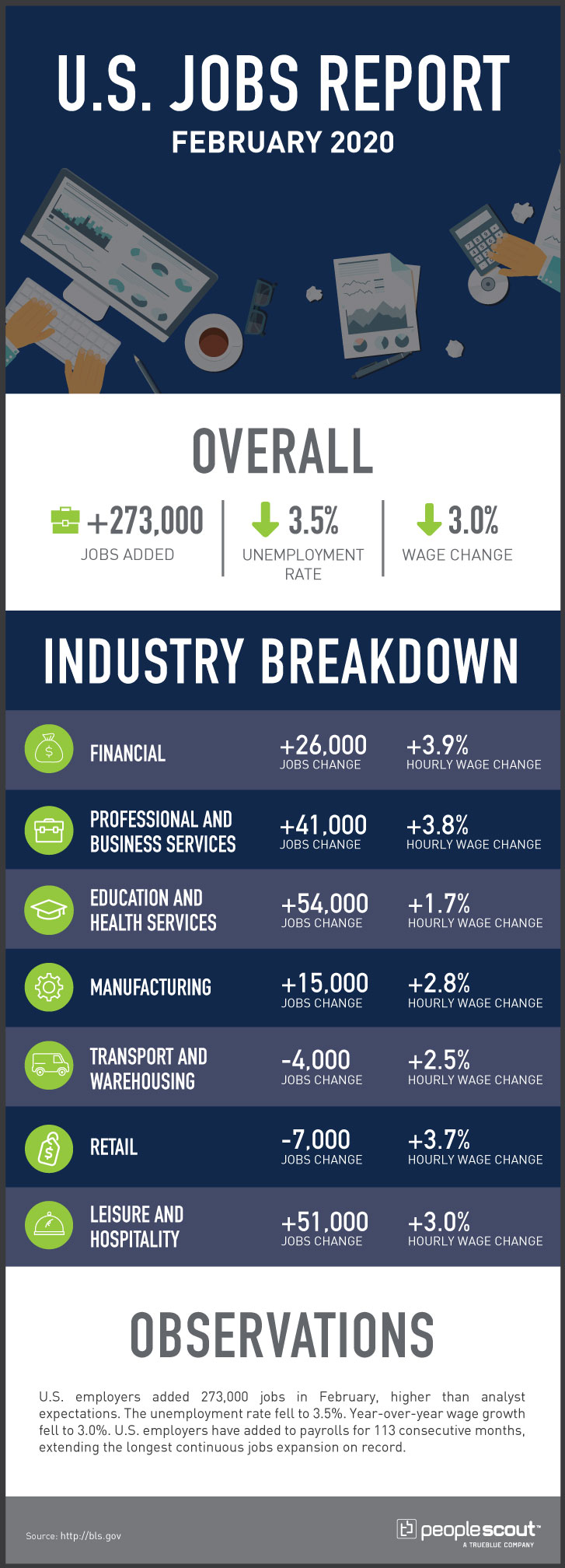The Labor Department released its February 2020 jobs report which shows that U.S. employers added 273,000 jobs in February, which beat analyst expectations. The unemployment rate fell to 3.5%. The labor force participation rate remained at 63.4%. Year-over-year wage growth fell to 3.0%. U.S. employers have now added to the payrolls for 113 straight months, extending the longest continuous jobs expansion on record.

The Good
The headline numbers in the February jobs report are good news. According to MarketWatch, analysts had expected just 165,000 new jobs—far below the 273,000 added last month. The strongest gains came in healthcare, restaurants, construction and government jobs. Healthcare providers alone added 57,000 positions. This provides a strong baseline for the economy as concerns over the coronavirus grow.
The Bad
Despite the strong numbers, the New York Times reports that there are vulnerabilities in the economy. Business investment and wage growth have been sluggish for months. Hiring in manufacturing is also slowing. Analysts expect job creation as a whole to slow in 2020.
The Unknown
The biggest concern—the novel coronavirus—has yet to make an impact on the jobs report. The numbers in the February report come from the week of February 12—before the U.S. saw an uptick in coronavirus cases or deaths. Experts say the February report demonstrates a strong baseline against which they can monitor the impact of the virus in the U.S.
However, the Wall Street Journal reports that companies are starting to feel the effects. Airlines and hotels are reporting a decrease in business—with some airlines cutting back on the number of flights and announcing hiring freezes. Experts also expect the virus to have a large impact on restaurants, entertainment and retail. At the same time, there has already been increased growth in the healthcare and science sectors.
So far, the New York Times reports that the manufacturing sector is seeing mixed impacts from the virus. Those who depend on parts from China may be experiencing supply issues. However, some U.S. based manufacturers are seeing increased demand from companies that previously relied on overseas suppliers. Over the next few months, economists will be watching the impact closely.



